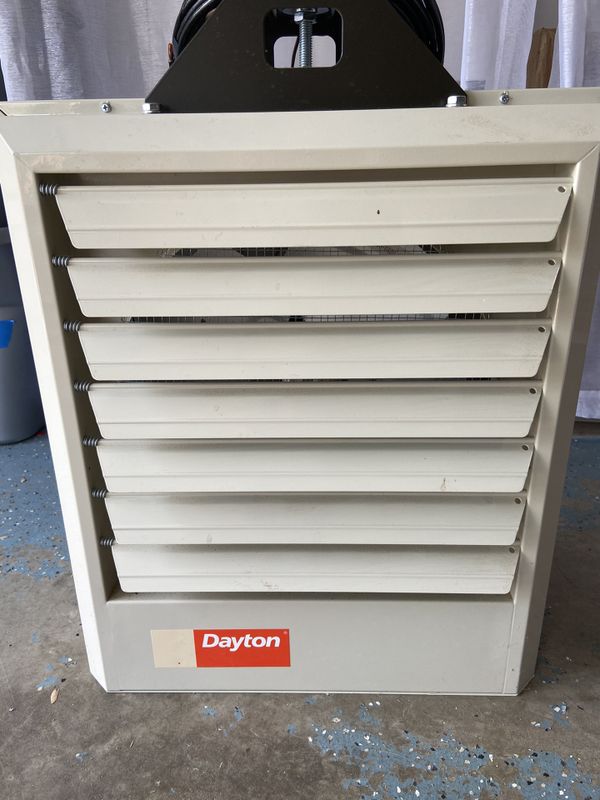

I cut the access hole so I can easily make a removable board to put in its place in case I ever need back in the top of the panel. Once the power was off, I started cutting in an access hole in the drywall at the top of the breaker.

The work: First things first – KILL THE POWER! Our place has a large main disconnect at the pole so it got turned off first.
220 volt garage heater code#
Not what you asked, but by code you also must have 8 ft. There really isnt any legal way around it. Lastly, all of the wire will be inside ¾” conduit mounted directly to the dry wall. For a 26A nameplate load, Code will require 8 wire and a 40A circuit breaker. According to the NEC, a 30 amp 2 pole breaker and 10 awg THHN wire will do the trick while giving me some room in the circuit (and the conduit) to run a bigger load if I need to. This number determines the size of wire, conduit, and breaker I will be using. Relay wires: a) Black 10G : Replaces black wire between switch and L1 block. 2) Wire the relay to the heater, replacing (and removing) the existing dial thermostat switch. Between the two of those tools, the MAXIMUM current draw would be about 21 amps. Theres plenty of room in the FUH54 box for it attach with two sheet metal screws. Getting started: I plan to use these two outlets for my table saw and the plasma cutter or welder. Fortunately there are multiple vacancies inside the garage panel for more 220V breakers which I intend to use for this job. This panel only contains 220v breakers which supply things like the air conditioner circuit, the water heater, the furnace, and another 110v sub-panel inside the house. This is where the main line comes into the house from the pole. Here’s what I’m starting with: I have a large 200 amp service panel inside my garage. Here’s the plan: Add 2 outlets to the garage start by running all of the conduit for the wires, mount the plug boxes, pull wire through all the conduit, terminate all of the wires inside the plug boxes, route the wire inside the panel, then finally wire in my breaker. Things I Used For This 220 Volt Outlets Project: If you recreate any of the work shown here, you are operating solely at your own risk. If you do not feel confident or qualified to do electrical work, I strongly encourage you to hire a professional. Some quick lawyer language: I am not a professional, I do not claim to be a professional, and I am not encouraging anyone to do any work that is not legal, permitted, inspected, or unsafe. Ideal for garage/workshop, commercial grade heating element. This week I am adding in 2 outlets (or “plugs”) to the garage. Pay 203.64 after 25 OFF your total qualifying purchase upon opening a new card. The new place we just moved to has only one 220v outlet and it is dedicated to the water heater. I know plenty of you can relate to the struggle of not having any 220 volt A/C outlets in your garage space. Thinking about adding in some 220 volt outlets? Check out this DIY project where I show you how I added some outlets in my garage!


 0 kommentar(er)
0 kommentar(er)
